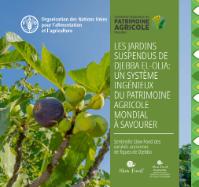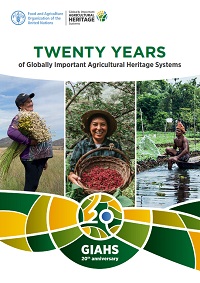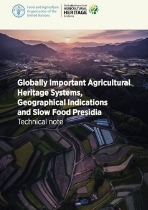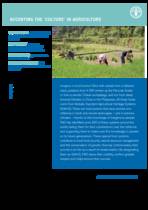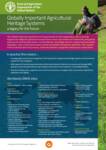As part of the collaboration between the FAO GIAHS Secretariat and the Slow Food Foundation, the ancient varieties of figs in the Hanging Gardens from Djebba El-Olia GIAHS site were included in the Slow Food Presidium catalog with the aim of recognizing the importance and urgency of preserving this agricultural heritage site.
Language: French
The following publication is a collection of success stories from different Globally Important Agricultural Heritage Systems (GIAHS) and aims to showcase the achievements made over the past 20 years since the establishment of the GIAHS programme of the Food and Agriculture Organization of the United Nations (FAO). The publication will feature success stories from 1) Tanzania 2.) China 3.) Japan 4.) Italy 5.) Spain 5.) Peru and 6. Algeria to give an insight into what has changed since the designation of these systems as a GIAHS.
Download the digital format here.
This report seeks to provide the countries in the Europe and Central Asia region with an overview and real examples of Nature-based Solutions (NbS) applied to agriculture. This is FAO’s first attempt to present NBS applied to agriculture especially pointed at the countries of this region, prompting the scaling-up of these actions as solutions to brought ashore the transition towards resilience and sustainable agriculture.
This technical note highlights the specificities of each approach, clarifies key differences between them and explores possible synergies. It also aims to encourage farmers and governments to contribute to and support the conservation of these fragile and remarkable local food systems, and as such, to the achievement of the Sustainable Development Goals (SDGs). The note focuses on three approaches in particular: Globally Important Agricultural Heritage Systems (GIAHS), Geographical Indications (GI) and Slow Food Presidia.
It has been some 12 000 years since humans gave up their huntergatherer ways. They grasped the idea of saving and planting seeds from season to season, which meant that instead of constantly foraging for food, they could stay in one place. They were able to concentrate on building their communities and, at the same time, develop agricultural systems adapted to local climates that allowed them to survive and even flourish in the lands where they settled. With each generation improving upon the previous, these ingenious systems have brought with them the indigenous knowledge of the centuries.
The Globally Important Agricultural Heritage Systems (GIAHS) programme aims to identify, support and safeguard agricultural systems that sustain and conserve our biodiversity and genetic resources for food and agriculture, rural livelihoods, knowledge systems, cultures and remarkable landscapes. They are the quintessence of what sustainable development should be. FAO, together with its national and local partners, works towards their recognition and dynamic conservation.


